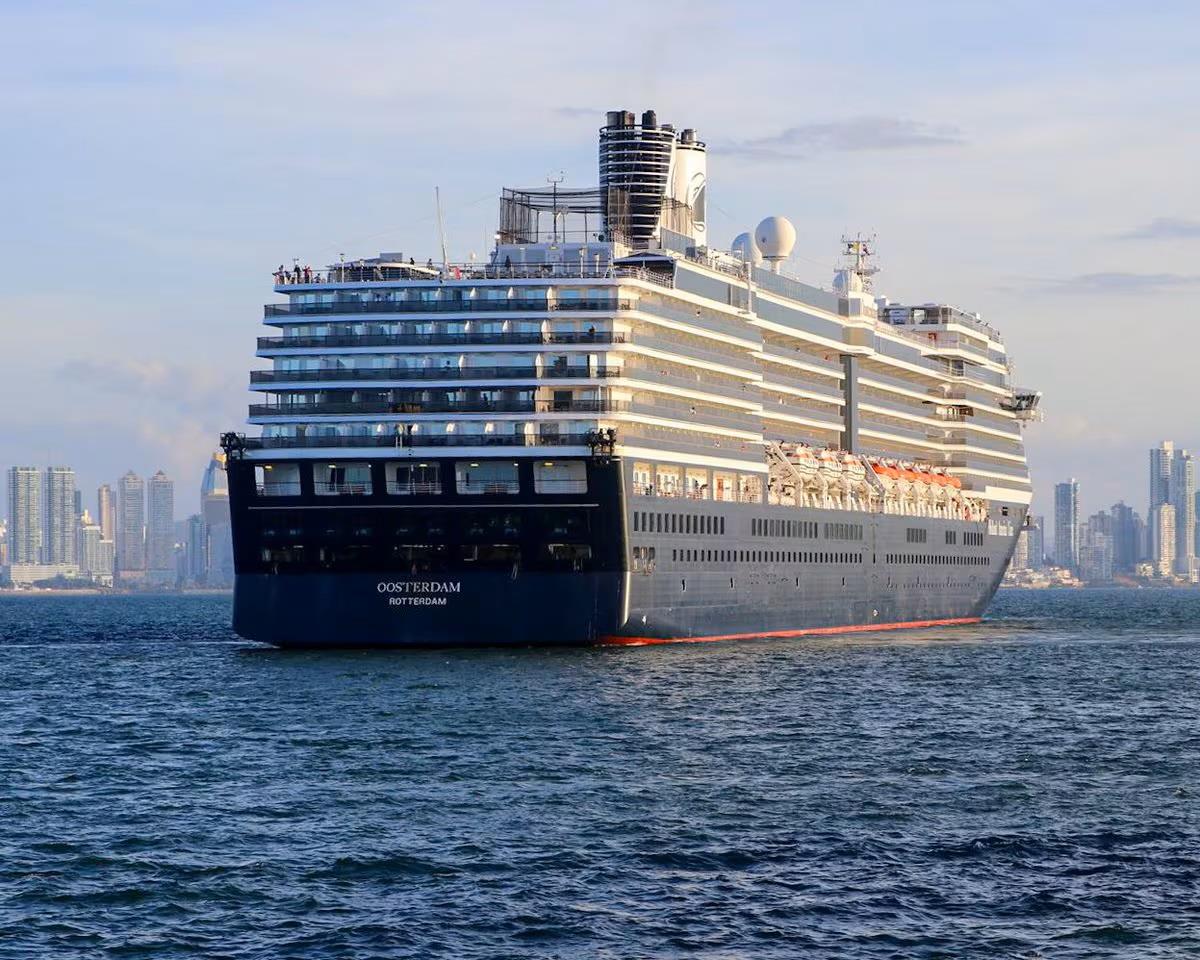
The Panama Canal Expects Up To 32 Ships To Cross Daily As Of June 1St
This is important news for the country. The serious drought, a product of the El Niño phenomenon, forced the interoceanic waterway to apply drastic measures to face an unprecedented situation until 2023, reducing the daily traffic of ships to only allow, at one time, the passage of 24 ships. The Panama Canal has welcomed more ships per day in May, signaling a slow return to normalcy for the waterway and a wider sigh of relief for shippers hoping for an end to transit restrictions that have been in place since last summer.
According to the Panama Canal Authority (ACP), as many as 32 ships will be allowed to reverse a spot to sail through the waterway by June based on the present and projected level of the manmade Gatún Lake, which was heavily impacted by a months-long drought during Panama's May-to-November rainy season last year.
Clarksons Research said in analysis earlier this month that total transits in the canal are still down by 30 percent compared to a year prior. Under normal circumstances, 36 to 38 vessels are allowed to be booked to transit the Panama Canal per day.
With the country's dry season coming to an end this month, the ACP has already been easing restrictions that were originally put in place throughout the second half of 2023, most recently increasing the number of daily reservations allowed from 24 to 27.
With the completion of the maintenance, this number increased again to 31 per day across both the original Panamax locks (24 vessels) and the newer Neopanamax locks (seven vessels). Additionally, an extra slot will open in the Neopanamax locks starting June 1, with crossings expected to remain at 32 per day until further notice.
The Panamax locks enable passage of smaller ships up to 966 feet long, while larger ships that fit the Neopanamax locks have a maximum length of 1,215 feet.
Beyond the transit bookings, the ACP is also easing draft restrictions for Neopanamax ships, adding one foot back to the current maximum depth allowed of 44 feet.
Effective June 15, the maximum authorized draft for vessels transiting the Neopanamax locks will be 45 feet.
The draft for Panamax ships remains unchanged at a maximum depth of 39.5 feet.
By June 16, the ACP expects the Panamax draft to remain the same, while it anticipates lifting the depth restrictions again to 46 feet for Neopanamax ships.
Official water levels at Gatún Lake were 80.3 feet deep, 2.6 feet shallower than the 82.9 average in April over the five previous years. This represents a significant closing in the gap from the 5.5-foot average differential in January, when water levels were 81.4 feet deep compared to the usual average of 86.9 feet.
The restrictions implemented last year amid the low water levels appear to have worked, cutting down total canal waters time from 66.5 hours on average in August to 20.7 hours in March. Canal waters time is the average time it takes a vessel to transit the canal, including waiting time for passage. Without accounting for the wait, average in-transit times dropped from 11.4 hours to 9.4 hours.
And while the Panama Canal Authority reported as many as 161 vessels queued up to transit the waterway as of Aug. 10-accounting for both those who booked a reservation and those without an appointment-that number has fallen off drastically. Due to the prior booking slot restrictions amid the drought conditions, the ACP also is amending one more policy by giving temporary priority to Panamax passenger vessels who are planning on booking 90 days ahead of Oct. 1.
Although conditions have improved, the country's government wants to ensure a repeat of last year's events doesn't occur.
In March, Panama's Council of Ministers unveiled the creation of Multimodal Dry Canal project in an effort to speed up the movement of goods through the isthmus and improve clearance times.
As part of the project, the country would integrate existing roads, railways, port facilities, airports, logistics warehouses and duty-free zones to create a new special customs jurisdiction to provide a dry route as an alternative to the roughly 50-mile waterway.
Maersk debuted a similar“land bridge” service to kick off 2024, bypassing the canal on one of its trade routes amid the shipping delays posed by the transit restrictions. As part of the service, the company would split its Oceania-to-the-Americas route into two loops on each side of the canal, where cargo would be dropped off at a port before being transported to the other side via rail and picked up by a ship.
The container shipping giant recently announced as of mid-May it would restore traditional transit through the canal, eliminating the need to move containers via the land bridge.

Legal Disclaimer:
MENAFN provides the
information “as is” without warranty of any kind. We do not accept
any responsibility or liability for the accuracy, content, images,
videos, licenses, completeness, legality, or reliability of the information
contained in this article. If you have any complaints or copyright
issues related to this article, kindly contact the provider above.
Most popular stories
Market Research
- Thinkmarkets Adds Synthetic Indices To Its Product Offering
- Ethereum Startup Agoralend Opens Fresh Fundraise After Oversubscribed $300,000 Round.
- KOR Closes Series B Funding To Accelerate Global Growth
- Wise Wolves Corporation Launches Unified Brand To Power The Next Era Of Cross-Border Finance
- Lombard And Story Partner To Revolutionize Creator Economy Via Bitcoin-Backed Infrastructure
- FBS AI Assistant Helps Traders Skip Market Noise And Focus On Strategy



















Comments
No comment